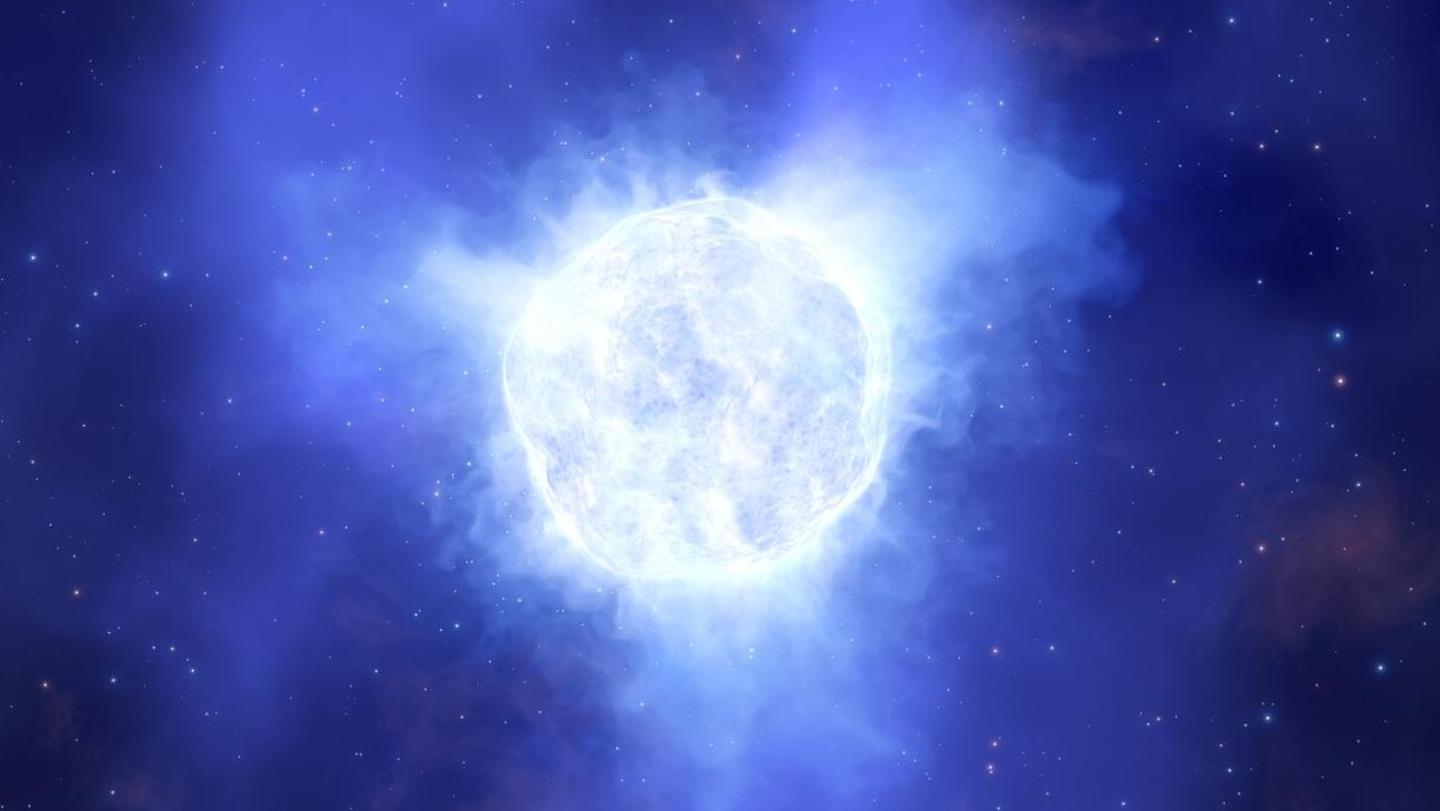
A massive star just vanished in a distant galaxy. How?
What's the story
In a strange development, a humongous (and turbulent) star sitting millions of light-years away from Earth appears to have vanished in thin air. The body's existence was hypothesized on the basis of multiple astronomical observations conducted between 2001 and 2011, but as of 2019, its signature has completely gone. There is not even a trace of what happened to it. Here's more.
Star
Luminous blue variable some 75 million light-years away
Located 75 million light-years away in the Kinman dwarf galaxy, the missing star belonged to the category of luminous blue variables - stars that are extremely massive, bright, and at the end of their lifespan. Typically, observing individual objects at such vast distances is impossible, but LBVs' variable and unstable light signature, marked by shifts in spectra and brightness, make them detectable from Earth.
Observation
So, it was spotted regularly between 2001 and 2011
When astronomers first spotted LBV-specific light from Kinman galaxy, they thought that the region hosts a turbulent star which is at the end of its lifespan. To better understand, multiple teams observed the light signature from the galaxy between 2001 and 2011. During those observations, their confidence grew further that this was certainly an LBV which was 2.5-3.5 million times brighter than our Sun.
Disappearance
In 2019, however, they found no sign of the star
While the existence and behavior of the star looked normal till 2011, observations from 2019 left everyone shocked. The teams from the European Southern Observatory (ESO) used all four of their Very Large Telescopes to assess the unique star signature but found no trace of it whatsoever in the dwarf galaxy. It was just missing from the scene.
Question
Disappearance obviously puzzled the astronomers
As stars evolve over billions of years and explode in a brilliant burst of light or supernova, the sudden disappearance was a mystery of cosmic proportions. To look into the matter, the astronomers scoured through archived observations and found that the light of the star was not observed in 2016 either. In fact, the evidence of its existence was last recorded in 2011.
Possibilities
So, what happened here?
While there is no way to be sure, there are two theories at the moment. The first suggests that the star died and transformed into a black hole without sparking a supernova, a case indirectly witnessed just once in the past. Meanwhile, the other one implies it has been veiled by a thick cloud of dust or is experiencing a dramatic drop in luminosity.
Quote
Unusual for a massive star to disappear without supernova
"It would be highly unusual for a massive star to disappear without producing bright supernova explosion," said astrophysicist Andrew Allan about the failed supernova case. "If true, this would be the first direct detection of such a monster star ending its life in this manner."
Fate
Future observations will define the fate of the star
That said, the exact fate of the disappeared star will be defined by future observations of the dwarf galaxy, across a range of wavelengths. Current data is not enough but more data would tell whether the old-aged LBV has collapsed into a black hole or is still present behind a cloud of dust. There is no clarity, however, when these observations will be taken.